Sink or Swim: Inside the battle over access to the historic Clontarf Baths
Locals hoped a redevelopment would return the pool to public use after decades of disrepair.

FOR MORE THAN 20 years, the disused Clontarf Baths lay as a blight on the picturesque north Dublin seafront.
Numerous attempts to redevelop the property had failed, but in 2011 its owners – a well-known Dublin hotelier family – put forward a new plan, one that would restore the more than century-old seawater pool to its former glory.
While many locals were suspicious that the proposal was another in a series of attempts to push through a lucrative commercial development, there was also optimism that the baths, once home to national champions, would return to public use.
But six years later, as the finishing touches were put on the development, the enthusiasm turned to disappointment and anger for many as it emerged that only swimming club members would have regular access to the facility, which would operate for a few hours a day for half the year.
Central to locals’ ire was the belief that the developers had breached a core condition of the project’s approval intended to safeguard the site’s primary use as a pool – an argument ultimately rejected by both the baths’ owners and the local council.
In this Noteworthy investigation, we look at how the site fell derelict and remained unused for so long before it finally came to be redeveloped – and why it remains off-limits to the broader public.
A long history
Built in 1864 and overhauled in 1886, the baths were first operated by the Clontarf Baths and Assembly Rooms Company, which offered hot and cold baths to both ‘ladies and gentlemen’, who swam in separated areas.
The baths were used for events such as regular race meetings of the Clontarf Swimming Club, itself founded in 1884, and for many years they were a success.
In 1905, the company’s annual meeting was told of the firm’s ongoing profitability after a “thoroughly successful” season thanks to the good weather. The baths also became the venue for an annual Christmas race, claimed to be the oldest of its kind in the country.
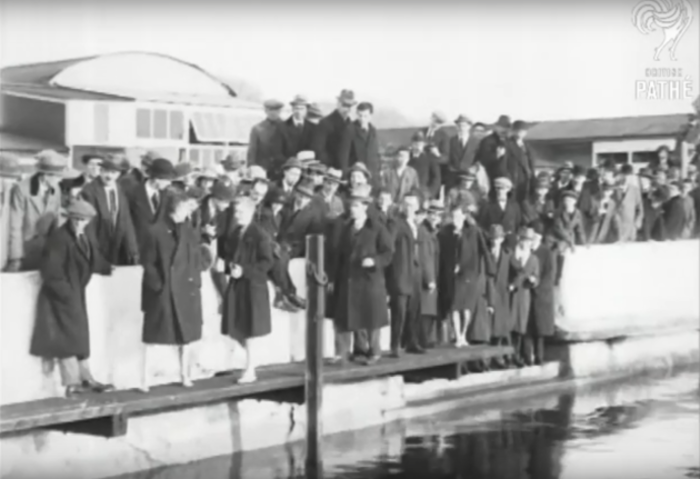 The Christmas swim in 1922
The Christmas swim in 1922
After nearly 60 years, the property was sold in 1944 for a reported £800 to a new firm, Clontarf Baths Ltd, owned by members of several swimming clubs.
However within a decade the firm had run into financial trouble and the baths were threatened with closure without financial aid from the local authority.
The then Dublin Corporation weighed up buying the facility outright, however it baulked at the price of both the initial purchase and ongoing cost of running the pool. Instead, a series of annual grants were agreed to help keep the operation afloat.
While regular fixtures such as the Christmas swim continued, by the 1970s the baths were used more sporadically and they slowly fell into disrepair as local authority-run indoor pools gained favour.
In 1990, the first plan for a complete redevelopment of the baths – by then considered an eyesore – was put forward by a new owner, a firm called MB Investment.
However the proposal for a new, two-storey structure with a restaurant and both heated and outdoor pools was scuppered over concerns the large development would block sea views along the Clontarf coastal strip.
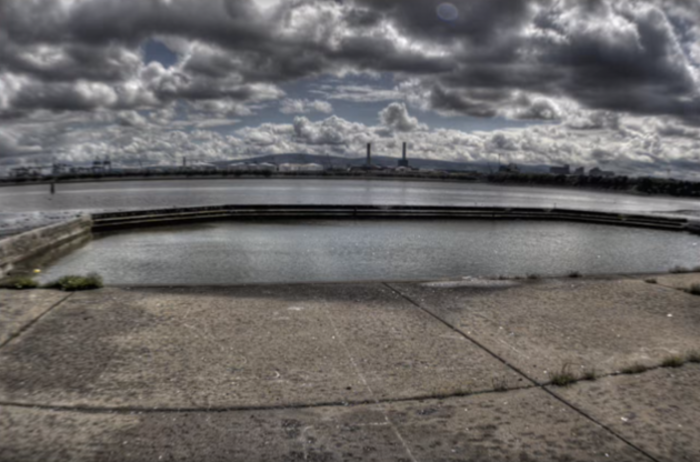 The disused baths in the late 2000s
The disused baths in the late 2000s
The Cullen connection
In the mid-1990s the baths closed completely to the public, around the same time they were bought by the Cullen family, who were active as developers with several businesses in and around Dublin.
Abbeybeg, a firm controlled by Stephen Cullen, who represented Ireland in swimming at the 1988 Olympics, applied in late 2000 to turn the baths into a two-storey development including an art gallery, restaurant and café-bar.
An earlier attempt to sell the baths for up to £600,000 had failed to attract a buyer, while Cullen’s idea of turning the facility into an indoor leisure centre was abandoned after the development of the nearby sports complex in Fairview and its 50m pool.
The two-storey proposal was cleared by Dublin City Council with conditions, but An Bord Pleanála rejected the plans after an appeal from residents.
A similar application the following year which also included a boat clubhouse was withdrawn, while a 2004 plan that added two first-floor apartments to a ground-floor restaurant was again rejected on appeal.
Three years later, the developer returned with plans to turn the site into a single-storey ‘day spa’ but for a third time the project was defeated on appeal.
In 2011, a new firm carrying the same name as the baths’ original operator, Clontarf Baths and Assembly Rooms Company, applied to redevelop the derelict complex and restore the existing seawater baths alongside a 350 sq m restaurant and café-bar.
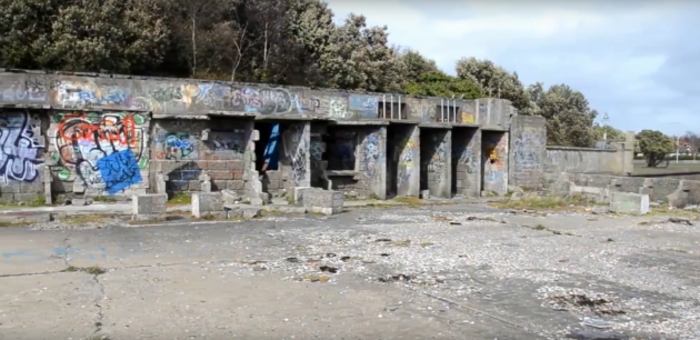 The disused baths building in 2013
The disused baths building in 2013
The company was owned by Mary Cullen, the wife of renowned publican and hotelier David Cullen – the older brother of Stephen Cullen.
Notes from a pre-planning meeting, held the previous year, said that the primary purpose of the more modest development would be “a re-instatement of traditional swimming pool with ancillary uses”.
The council report noted that a sports club “would aim to utilise the swimming facility for water polo in addition to public access”. Nevertheless, the scaled-back plans attracted a number of objections.
One local resident said he was suspicious the swimming pool restoration was being proposed only to get the rest of the application over the line and that it would soon be closed on financial grounds while the restaurant and bar remained.
Several sporting groups wrote letters in support of the baths reopening and in 2012 the national planning authority cleared the development – although with new conditions added to the council approval.
These included that the restaurant would be operated “in conjunction with the swimming pool” and that if the pool was closed for a period of more than 12 months the rest of the project would also need to be shut.
It added that the condition was introduced “to ensure that the restaurant/café bar remains subsidiary to the main use of the site for swimming” in keeping with the site’s zoning for recreational use.
Work begins
While the approval was finally granted in 2012, there was little progress on the development until late 2016.
In the meantime, David Cullen, who owned the Turk’s Head bar and Paramount Hotel in Temple Bar among other properties, had been declared bankrupt in the UK after he was ordered to repay Nama €29 million for a series of loans.
When work did begin it initially progressed quickly, with an opening date of September 2017 floated during the company’s licensing application.
Mary and David Cullen’s son, also named David, had recently taken over management of the firm, while a share transfer made his father – since discharged from bankruptcy – the new majority owner of the business.
An update from the company to a Dublin City Council committee from late 2017 noted that “the reconstruction of the baths has gone vastly over budget” due to the nature of the site.
The presentation added it was hoped the baths would open the following year and be “made available for public use”, although with the caveat that the level of access was “yet to be determined and will rely heavily on the level of community support”.
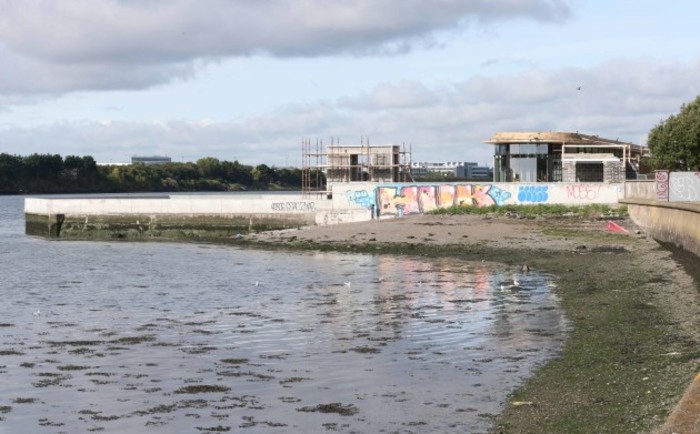 The baths mid-development in August 2017
The baths mid-development in August 2017
By early 2018, however, the operators told the media that swimming would have to be restricted to clubs unless Dublin City Council was willing to help cover the cost of opening the facility to the wider public.
Speaking at the time, the younger David Cullen said the company was “absolutely committed to opening to the public, but when that’s going to be I can’t really say right now”, adding that it was likely to be later in the year.
A figure of €400,000 was put on covering insurance and staffing to allow for general access. The council said it was not in the position to subsidise the private enterprise. Plans to warm the water at the facility to extend the swimming season were also dropped.
Meanwhile, documents obtained by Noteworthy show that planning disputes over several parts of the development – including the opening of the pool – had already been unfolding behind the scenes.
One Dublin City Council site inspection revealed the closed-in areas of the restaurant were now around 100 sq m – or nearly 30% – larger than the authorised floorspace due to changes to formerly outdoor areas.
Further complaints in February argued the developer had breached planning conditions by not opening the baths to the public, while one took exception with the restaurant opening before the pool.
My view is that the approach being taken by the developer will result in a bar, restaurant and cafe being commercially operated but a pool that is not available to the public and only fitfully in use,” a complaint said.
An April council inspection report said “the pool was full of water but was not open” and asked for the owners to clarify the proposed opening date for the baths as the planning conditions required it to operate alongside the commercial component.
By that stage, the restaurant had been trading for several weeks. In July, the council fielded another complaint that access to the pool was restricted to the Clontarf Swimming Club and their emails to the group had gone unanswered.
“The restaurant has been open for a couple of months now and the owners are enjoying the profits of their venture, judging by the numbers of people in the place. It is about time the public got to enjoy the facility too,” the email said.
In August, the company’s planners wrote to the council to confirm that the baths were open to swim club members and operating to a summer timetable with daily swimming sessions of at least two hours.
“We submit that the baths are in active use which accords in full with the (planning conditions),” the letter said.
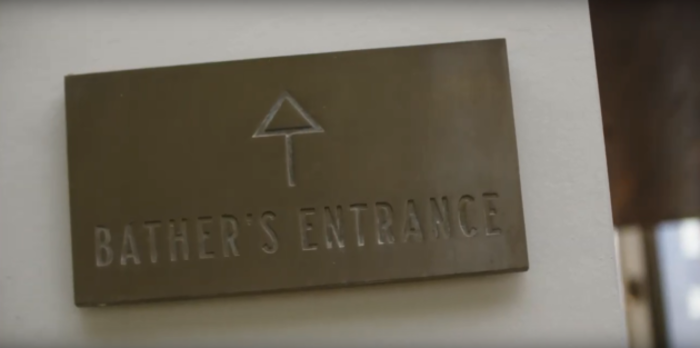
Enforcement dropped
Dublin City Council dropped any action in relation to the pool at that stage, writing to seven complainants in late August to advise that the pool planning conditions were being met.
In the meantime, the developer lodged an application to retain the unauthorised restaurant extensions.
The council gave conditional approval to the plans, however it rejected part of the extension on the grounds that adding more enclosed dining space would result in the facility “not remaining subsidiary to the main permitted use of the site for swimming”.
The Clontarf Residents’ Association had complained in its submission that it had been made “abundantly clear” since the venue’s March opening that “the pool is ancillary to the restaurant as opposed to the other way around”.
The changes were given full clearance by An Bord Pleanála in January after an appeal from the property owner.
The business realities
For his part, David Cullen Jnr rejected any claims that the developers had failed to comply with any of their requirements when it came to the pool operation, adding that the council “gave it the green light” after the investigation.
“It’s a struggle for us because (the critics) tend to be very vocal, very outspoken against us, which is a bit disappointing considering the amount of effort, time and money that my family has put into developing that site,” he told Noteworthy.
Cullen added that people who wanted unrestricted public access to the pool “don’t seem to understand the realities of running a business” and the associated insurance and staffing costs.
The pool is being run as a separate operation to the main business, he said, which received no payment for any clubs’ use of the facility despite bearing the maintenance costs.
I believe it is available to you if you want to use it, all you need to do is pay a small joining fee to Clontarf Swimming Club and then you go and swim there. I really don’t understand why it has to be so difficult.”
However the operators’ arguments are given short shrift by locals who believed that the baths would be open to the general population.
Clontarf Residents’ Association chair Deirdre Tobin said it was welcome that the long-derelict site had been developed, but locals were still upset that it wasn’t made available to the public as anticipated.
She said she accepted that the costs of doing so may be exorbitant, “but you build that into your business plans” when putting forward a new development.
Clontarf Swimming Club chair Bobby Nolan, who has been running the pool operation, said he was quoted nearly €250,000 for annual insurance if the facility was open to everyone.
For that reason, the decision had been made to restrict access to members of Swim Ireland-affiliated clubs and other sports organisation whose insurance was already paid for through their annual membership fees.
“If you want to open to the public, no problem, but we would have to charge you €60 for a swim, which wasn’t feasible,” Nolan said.
He added that a number of groups in addition to Clontarf Swimming Club had used the baths for open sessions and members were typically charged €5 for access, money which was ultimately paid to him to continue running the pool operation.
Nolan said the pool operated on a seasonal basis with regular evening and weekend sessions between May and October, in addition to occasional training in the colder months.
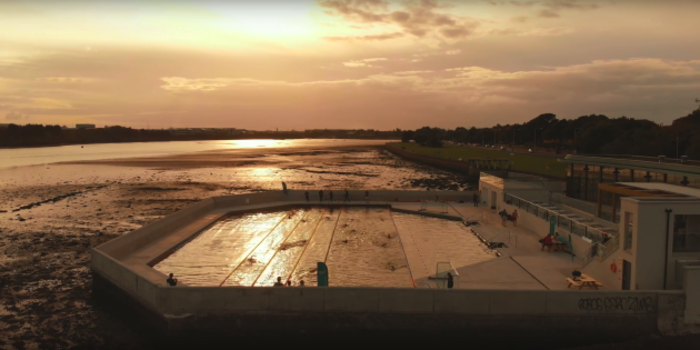 Swimmers at the refurbished baths in August
Swimmers at the refurbished baths in August
The council response
Despite Dublin City Council closing its investigation into the pool operation, many councillors intend to keep agitating for the baths to be opened more often – and to more people – although there is little appetite to use ratepayers’ money to subsidise the service.
Independent Damian O’Farrell said councillors were willing to give the baths’ owners some time because of the huge outlay on the development, but “it’s time to make the baths public”.
I believe people should be able to go down and pay a few quid and use the pool. It’s a community facility and that was the understanding,” he said.
That understanding, for many people, hinges on an interpretation of the wording of the planning conditions for the development, which state that the restaurant be run “in conjunction” with the pool.
The reason for this condition was to ensure the restaurant and café-bar remained subsidiary to the main use of the site for swimming, in accordance with the local zoning.
However in a response to Fianna Fáil councillor Deirdre Heney in April, the council’s chief executive said enforcement action could only be taken for failing to comply with a condition and not for failing to comply with the reason for a condition.
This meant the council would only look at whether the pool was open as required and not whether or not the new restaurant remained ‘subsidiary’ to the historic baths.
Heney said this was a “ridiculous argument, a technical argument” and it was “hugely disappointing” that the baths weren’t available to the general public.
“I do think the owner should make every effort to make the baths available for public use for some period of time in the summer months, at least,” she said.
Paul Kearns, a former Dublin City Council planner, said while there was nothing in the baths’ conditions to mandate they be opened to the general public the local authority should apply common sense as to whether the pool was being operated as approved.
“If the bar-restaurant is open seven days a week and the baths are open one day a week then the restaurant is obviously not a subsidiary operation,” he said.
Kearns said that a reason for a planning condition like the baths operating “in conjunction” with the restaurant could still be taken into consideration in any enforcement actions or if the matter ever went to court.
I think it’s washing your hands of it a little bit to say it’s not in the condition and therefore it’s nothing to do with us,” he said.
Cullen insists that the owners wanted to open the pool to as many people as possible but that wasn’t commercially viable within the current insurance landscape.
“I would love to see people in there swimming having a great time, love it. But that’s a fantasy land,” he said.







